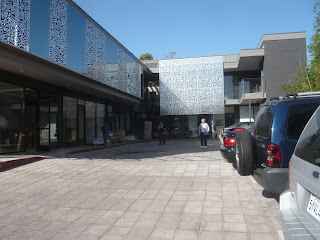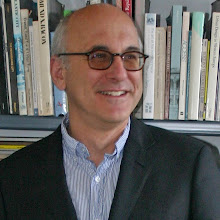What hopefully unites the following professional design resolutions is a desire to elevate discussion of the important role design plays in establishing a vital and interesting city. Design implemented makes a city more amenable, more comfortable, more identifiable, easier to navigate, and more delightful and beautiful. Beauty and delight alone do not solve the environmental, economic and social ills that surround us. But try to imagine a city without beauty and delight. Would you want to live there? More than acknowledged, designed delight and beauty, when incorporated into the routines of daily life do make a big difference, both in terms of our own civic enthusiasm and the enthusiasm of outsiders who visit us and then critically judge us.
Architecture and urban design resolutions are meant to remind leaders and citizens alike that a city must be continuously designed, even when the economy is bad. A continuously designed Los Angeles is a Los Angeles that competes successfully for attention, interest, visitors, and investment in a global urban marketplace with lots of choices. Architecture and urban design resolutions are also meant to be a New Year’s gift to ourselves as professionals, to give those of us who already live here, and want to keep working here, more reasons to trust that the next job is coming.
In this spirit I have nine 2009 resolutions on my list.
- Plant and maintain 800,000 trees - quickly. Los Angeles Mayor Antonio Villaraigosa announced two years ago an initiative to plant and maintain a million new trees. This is an important environmental program that promises to mitigate the effects of Los Angeles’ urban heat island, reduce water runoff, and beautify the city. To date, despite the valuable gifts of corporate sponsors and volunteers, the initiative has resulted in less then 200,000 new trees. This program should be speeded up, become the most visible evidence that the City is serious about realizing a 21rst Century urban forest, and utilized as a tool to let Los Angeles communities know that the City is planting for a better future. In this last regard, a good place to concentrate and maintain tree-planting efforts is along the City’s major boulevards.
- Design and build environments for farmer’s markets. In Los Angeles there are now close to 40 farmer’s markets bringing tens of thousands of people sociably together on a weekly basis. Yet these public spaces are ephemeral, appear only for a morning or an afternoon, and then disappear, making no contribution to their surrounds for the rest of the week. Now is the time to design and realize tangible places for these markets that can become everyday spaces. High quality pavers, lighting, benches, landscape and pavilions should transform the parking lots, streets and sidewalks of farmer’s markets and allow people to enjoy them everyday, even when the farmers are not in town.
- Paint Los Angeles taxicabs uniquely – hail them on major boulevards. Tokyo taxis are famous for their minty green color. New York’s are almost always yellow. Their cabs define in part the identities of their metropolises. Los Angeles’ are yellow, blue, green and do not contribute to the City’s image. Los Angeles needs a unique, colorful, and edgy taxi graphic and the City should require all new cabs to adopt it as a requirement of licensure. At the same time, Los Angeles should immediately extend the scope of the Hail-a-Taxi program from Downtown and Hollywood to major Los Angeles boulevards such as Wilshire, Ventura, and Vermont. Make it easier for people, and especially for tourists, to move about our city.
- Create bus shelters that reflect Los Angeles’ diversity. Los Angeles has 35 community plan areas. Implementing a bus shelter design program that flexibly adapts to the characteristics and identities of the City’s many neighborhoods will establish heightened pride and sense of place throughout the city, and more importantly, shelter from sun and rain the hundreds of thousands of people that utilize Metro everyday.
- Design and build streetlights, manhole covers, and all manner of street furniture in Los Angeles. Los Angeles has lots of creative designers and lots of foundries. Put them back to work designing and making the City’s outdoor furnishings. A couple of quick and highly publicized design competitions would bring a sense of progressive urgency and civic commitment to this local endeavor which engages local designers and businesses and directly integrates them into public works projects.
- Push the fences back and plant the buffers. I am driven nuts each time I see a school fence, golf course fence, or a park or open space fence of any kind built right to the back of any sidewalk. Los Angeles should immediately pass legislation that sets any new fence back from sidewalk facing property lines. Give some landscape back to the public and the city in the form of greenways, parkways, and trails that all can enjoy.
- Ban new billboards. While outdoor advertising has always been a part of Los Angeles’ urban landscape, the steady legal, and now illegal, proliferation of off-site signs, building wraps, and digital billboards sullies the city-wide environment. Hollywood and other parts of the city such as Downtown can and should make the case that commercialization of urban viewscapes is an essential aspect of Los Angeles place making. But these places should be the exception, not the rule. The rest of the City should be gradually freed from off-site signage blight.
- Hire architects, landscape architects, and designers so that the City of Los Angeles can implement and administer a new civic design work program. The intent of the first seven recommendations is a call to implement with stimulus dollars a new type of civic design and works program. They expand the definition of local public works beyond the fixing of potholes and the paving of roads. They ameliorate and beautify the environment. The beauty and delight of our city reinforces our second largest industry, tourism.
Some of these improvements will require the talents of private sector design firms. Others are most efficiently completed directly from within City Hall. In a recessionary time and with a new definition of civic design works in mind, now is the moment that the City should hire architects, landscape architects, and designers with a range of design and design management skills to immediately begin and implement a new civic design program. - Implement one demonstration smart and green street. Of all the infrastructural tasks a city undertakes, restriping a street to make it more pedestrian and bike friendly is one of the least expensive. Imagine that along with a restriping that the City would plan, coordinate, and implement the tree planting, farmer market, taxi, bus shelter, street furniture, and fence push back recommendations just suggested, and for good measure take down a few billboards as well. The result would be a street transformed, a place that people could bike, walk, live, work and play in better harmony with their surrounds. A first step would be to find the perfect street to test these ideas on a demonstration basis.
I have always thought 6th Street from Downtown to San Vicente Boulevard would be a great candidate for streetscape improvement and consequent community reinvention. 6th, for seven miles, connects residential communities to places of work, education, worship, open space, and commercial activity. Today 6th is a four lane traffic-clogged byway along most of its length. Restriping this street with only two lanes, one in each direction, would allow for the introduction of dedicated bike lanes and protected left-turn lanes. Restriping would also create within the right-of-way room for local shuttles to move back and forth. Presence of shuttles would promulgate the need for bus shelters. More pedestrian scaled lights would further highlight districts that are already abuzz with activity and invite more people rather than vehicle activity. Missing street trees could be replaced and additional trees planted. Fences at parks and schools could become transitions to green spaces rather than single purpose security barriers. A demonstration of these ideas and principles could transform and change the use of an entire sector of the city and result in a social, economic, cultural, and sustainable urban transformation that betters daily life in Los Angeles for hundreds of thousands of people.
At year’s end I will go back, look at this list, and determine for myself whether or not the City of Los Angeles is making this type of design progress. I emphasize that this is my list. Some of the items may appear a bit ephemeral or even silly (there should be a place for silliness in the urban world). Others may be impossible to achieve, at least in the near term. Yet, all of us, as architects, need to start describing to our friends how design realized makes for a better and more beautiful Los Angeles. I think they will be interested to hear what we have to say. Inherent in my 2009 design resolutions is a belief that a better designed Los Angeles, even in hard times, is a more beautiful, successful, and happy Los Angeles for one and all.
This piece is slated to appear in the January/February issue of Form - Pioneering Design.













